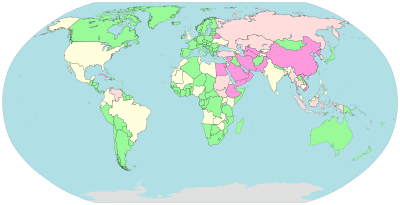Internet
Origins:
The origins of the Internet date back to research commissioned by the federal government of the United States in the 1960s to build robust, fault-tolerant communication with computer networks.[1] The primary precursor network, the ARPANET, initially served as a backbone for interconnection of regional academic and military networks in the 1980s. The funding of the National Science Foundation Network as a new backbone in the 1980s, as well as private funding for other commercial extensions, led to worldwide participation in the development of new networking technologies, and the merger of many networks.[2] The linking of commercial networks and enterprises by the early 1990s marked the beginning of the transition to the modern Internet,[3] and generated a sustained exponential growth as generations of institutional, personal, and mobile computers were connected to the network. Although the Internet was widely used by academia since the 1980s, commercialization incorporated its services and technologies into virtually every aspect of modern life.
Security:
Internet resources, hardware, and software components are the target of criminal or malicious attempts to gain unauthorized control to cause interruptions, commit fraud, engage in blackmail or access private information.
Malware
Malware is malicious software used and distributed via the Internet. It includes computer viruses which are copied with the help of humans, computer worms which copy themselves automatically, software for denial of service attacks, ransomware, botnets, and spyware that reports on the activity and typing of users. Usually, these activities constitute cybercrime. Defense theorists have also speculated about the possibilities of cyber warfare using similar methods on a large scale.[citation needed]
Surveillance
The vast majority of computer surveillance involves the monitoring of data and traffic on the Internet.[131] In the United States for example, under the Communications Assistance For Law Enforcement Act, all phone calls and broadband Internet traffic (emails, web traffic, instant messaging, etc.) are required to be available for unimpeded real-time monitoring by Federal law enforcement agencies.[132][133][134] Packet capture is the monitoring of data traffic on a computer network. Computers communicate over the Internet by breaking up messages (emails, images, videos, web pages, files, etc.) into small chunks called "packets", which are routed through a network of computers, until they reach their destination, where they are assembled back into a complete "message" again. Packet Capture Appliance intercepts these packets as they are traveling through the network, in order to examine their contents using other programs. A packet capture is an information gathering tool, but not an analysis tool. That is it gathers "messages" but it does not analyze them and figure out what they mean. Other programs are needed to perform traffic analysis and sift through intercepted data looking for important/useful information. Under the Communications Assistance For Law Enforcement Act all U.S. telecommunications providers are required to install packet sniffing technology to allow Federal law enforcement and intelligence agencies to intercept all of their customers' broadband Internet and voice over Internet protocol (VoIP) traffic.[135]
The large amount of data gathered from packet capturing requires surveillance software that filters and reports relevant information, such as the use of certain words or phrases, the access of certain types of web sites, or communicating via email or chat with certain parties.[136] Agencies, such as the Information Awareness Office, NSA, GCHQ and the FBI, spend billions of dollars per year to develop, purchase, implement, and operate systems for interception and analysis of data.[137] Similar systems are operated by Iranian secret police to identify and suppress dissidents. The required hardware and software was allegedly installed by German Siemens AG and Finnish Nokia.[138]
Censorship
Some governments, such as those of Burma, Iran, North Korea, Mainland China, Saudi Arabia and the United Arab Emirates restrict access to content on the Internet within their territories, especially to political and religious content, with domain name and keyword filters.[144]
In Norway, Denmark, Finland, and Sweden, major Internet service providers have voluntarily agreed to restrict access to sites listed by authorities. While this list of forbidden resources is supposed to contain only known child pornography sites, the content of the list is secret.[145] Many countries, including the United States, have enacted laws against the possession or distribution of certain material, such as child pornography, via the Internet, but do not mandate filter software. Many free or commercially available software programs, called content-control software are available to users to block offensive websites on individual computers or networks, in order to limit access by children to pornographic material or depiction of violence.
Interent users:
In 2015, the International Telecommunication Union estimated about 3.2 billion people, or almost half of the world's population, would be online by the end of the year. Of them, about 2 billion would be from developing countries, including 89 million from least developed countries.[1][2]
|
| ||||||||||||||||||||||||||||||||||||||||||||||||||||||||










0 Comments